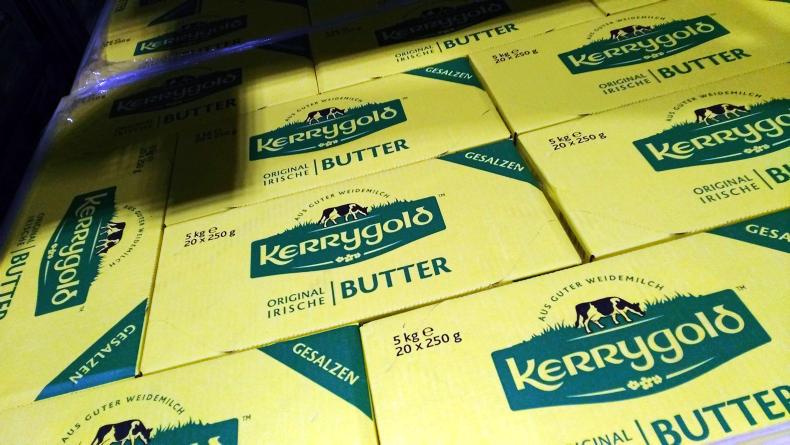Farmers may wonder what Ornua delivers for them. They know it mainly as the owner of Kerrygold butter, and have a basic understanding that it is a customer of their dairy processor or co-op.
Beyond that, it is very difficult for the farmer to see the value that Ornua brings to them. And perhaps this is its biggest weakness. The cynic may conclude that Ornua’s performance is coming at the expense of the price it pays for dairy products.
Given where its benchmark prices sit compared to European competitors (LTO), Ornua says it is delivering on price. Further evidence of this is that over the last five years, Ornua has captured an increasing share of the Irish milk pool.
Whether the processors are selling more of their product to Ornua because it provides the best price or its cashflow financing options, is difficult to ascertain.
Release valve
In an era of rapid milk expansion, having a guaranteed buyer such as Ornua for a large volume of product acts as an important release valve for member processors.
One aspect of Ornua’s business that is more tangible to the farmer is the recent development of fixed milk price schemes. While the farmer receives the fixed milk price scheme through their processor, it is Ornua which forward-sells the product to its customers that allows the processor offer the fixed contract.
Ireland is unique in the world today in that it has an organisation that was set up to market dairy exports abroad in the 1960s yet only markets 60% of Irish dairy exports today. The balance of Irish exports, excluding Kerry Group’s, are sold by a handful of processors who are also members of Ornua.
This has to create conflict around a board table where the CEOs of member processors are also competitors when it comes to international markets.
Continuity of supply acts as a drag on the business and highlights the conflicting interests of the member processors. In general, for processors with other marketing arms, in times of weak markets it becomes the processor’s preferred customer, while in times of strong markets it becomes the customer of last resort.
The jewel in the crown is no doubt Kerrygold butter, which has continued to grow volumes while maintaining margins. While it holds leading positions in its core German market and is growing rapidly in the US market, it has struggled to gain significant position in other countries.
The company has tried on a number of occasions to extend the brand into other dairy products. It has had some success but it is inherently difficult to do in practice.
In recent years, the Irish dairy industry has looked on enviously at the profits made by the infant formula brands. Ornua has often been called on to develop an Irish-owned infant formula brand. However, this is another example of where the conflict arises in the structure of Ornua.
Its processor members view Ornua as a volume seller for bulk commodities such as butter and cheese. But when it comes to more value-added products such as infant formula ingredients, the processors have kept this for themselves, preferring to do private deals on their own.
While it makes sense that Ornua would be the owner of an Irish infant formula brand, its ability to create one is almost impossible given the member processors have never allowed them access to the raw material ingredients.
Realistically, can the CEOs of Irish processors sit around the board table and agree a strategy for Ornua in the international market while at the same time developing a strategy for their own business? Ornua must work within the confines of its structure, and the model has served its purpose up to now in providing a route to market for the smaller co-ops. In an era of rapid expansion, where competitors are multi-billion-dollar companies, is it time to revisit the structure and governance of Ornua?






 This is a subscriber-only article
This is a subscriber-only article










SHARING OPTIONS: